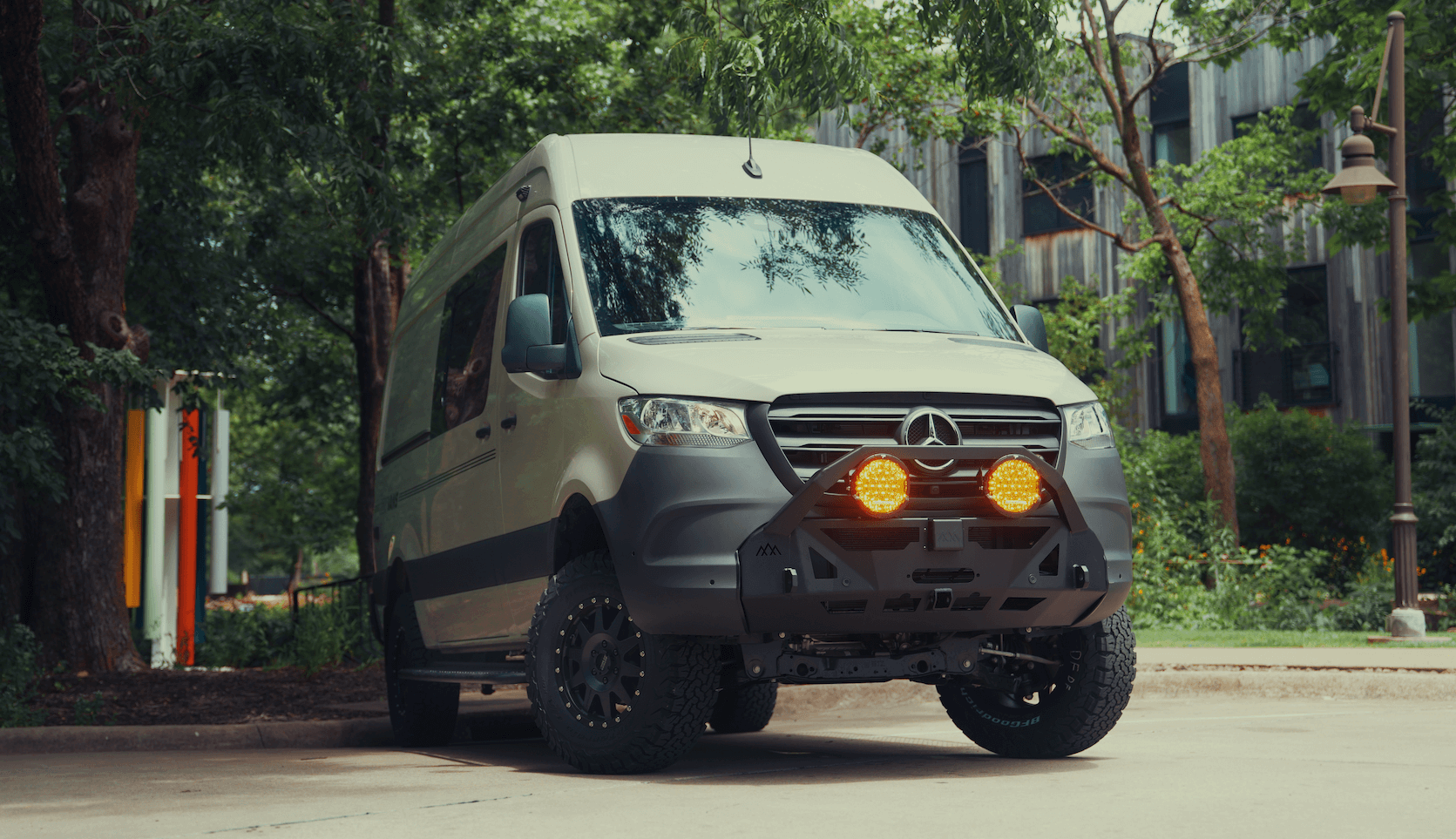Recreational Vans

Modern carriers rely on a stout hinge and latch system to handle dynamic load. Corrugations, washboard, and urban potholes all try to flex the assembly. Quality designs spread force into the body or bumper with reinforcement plates or dedicated receiver mounts. The ladder component must follow door curvature and provide wide rungs with grippy surfaces to prevent foot roll. When the two pieces are integrated, clearances must allow the door to open fully, bikes to mount if needed, and rear sensors to remain functional.
The best swing out plus ladder combo is not one size fits all. Roof height, rear door type, camera location, sensor array, and bumper style all influence placement. A ladder that sits too far out can snag branches. A spare placed too high raises the lift point and strains shoulders. The goal is a layout that clears taillights, preserves license plate visibility, and stays within legal width. Many carriers include provisions for a hi lift style jack, shovel, or small storage box. Keep added gear modest so hinge loads stay within design limits.
Hinges carry the show. Look for large diameter pins, tapered roller bearings, or bushings designed for side loads. The hinge post should tie into a structural member or a receiver, not thin sheet alone. A secondary latch or safety pin prevents unplanned swings on side slopes. Gas struts can manage opening force, though they must be rated for the tire and accessory weight in cold weather where pressure drops.
Rear carriers change how you back up and how you leave steep obstacles. Keep the tire centerline close to the door to limit swing radius. Check camera view and move the camera to a bracket if needed. Verify that the lowest point of the carrier does not sit lower than the bumper to protect departure angle. If you tow, confirm the swing clears the trailer tongue and wiring.
Fasteners should be graded and paired with thread treatment to resist vibration. Rungs need a flat step with texture that grips boots without chewing them. Side rails should offer hand positions that do not scrape body panels. Coatings range from powder coat to e coat to zinc rich primers. In snowy states, weekly rinses extend finish life. Stainless hardware with anti gall compounds prevents seized threads after salt exposure.
Routine checks keep this system quiet and tight. Inspect hinge play and latch bite after the first few hundred miles, then seasonally. Tire carriers concentrate mass behind the axle, so pack the roof sparingly to keep total height center of gravity in check. When climbing, keep three points of contact and face the ladder. Avoid carrying heavy items up the rungs, and use a tag line to hoist bulky gear to the rack instead. In winter, brush ice from rungs before stepping up.
Service items are simple and worth the calendar reminder. Grease serviceable hinges per the maker schedule. Replace worn latch pins and rubber bump stops to stop rattles. Confirm torque on mounting hardware at oil change intervals. If you hear a new squeak, stop and investigate before a long dirt stretch. A few minutes with a wrench now prevents a long field repair later.
Design details add quality of life. A ladder that lands near the rack aisle saves steps. A tire plate with multiple bolt patterns future proofs wheel changes. A receiver based carrier can move to another vehicle if the build changes. Balanced setups open with one hand and close with a solid click that feels secure even when the rig is off camber.
For builds that work as hard as they look, the rear combo should match the platform and the trips you take. Daily city parking, desert two tracks, or snow bound trailheads each push different priorities. The smartest choice is the one that respects the limits of the sheet metal, preserves cameras and sensors, and keeps your crew safe every time someone climbs.
When you are ready to integrate a spare carrier and ladder with power, storage, and recovery systems, a cohesive plan pays off. OZK Customs designs full van ecosystems so the rear combo clears your rack, awning, and lighting while keeping wiring and cameras tidy. Our team handles reinforcement strategies, sensor relocation, and layout so the carrier swings free and the ladder lands exactly where your hands want it.
Explore our Recreational vans to see how we build for real travel. If you want a one of one approach, our Custom build van path fits your vision and timeline. If you prefer a proven platform that finances easily, review our Mainstream vans options.
Ready to spec your rear carrier and ladder into a complete build Reach out and we will map the right hinge geometry, ladder placement, coatings, and lighting tie ins so the whole system works as one.
Ready for a clean rear carrier and ladder solution that fits your rig and your travel style? Tell us how you use your van and our team will design the right carrier geometry, ladder layout, and reinforcement for your platform. Start your build conversation now and let OZK Customs turn your ideas into road proof hardware.
ADDRESS:
6159 E Huntsville Rd, Fayetteville, AR 72701
PHONE:
(479) 326-9200
EMAIL:
info@ozkvans.com